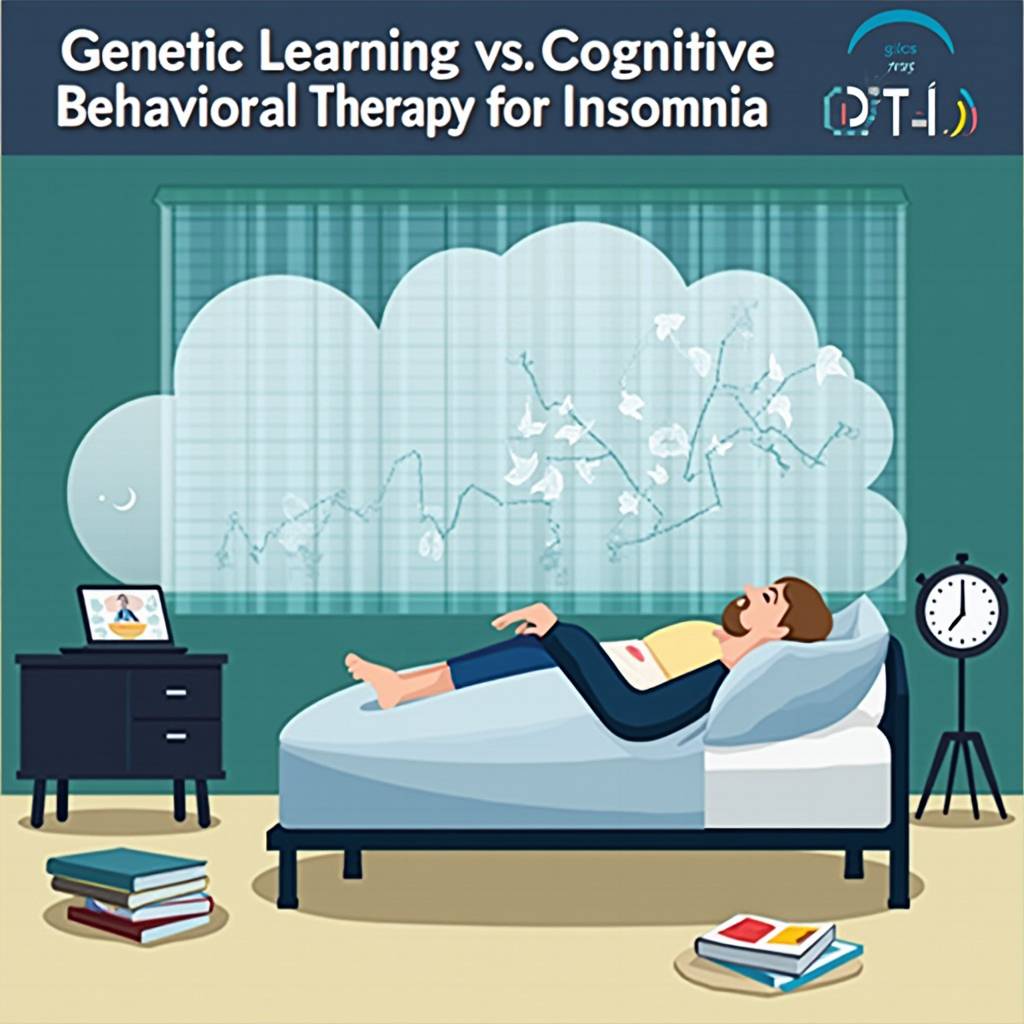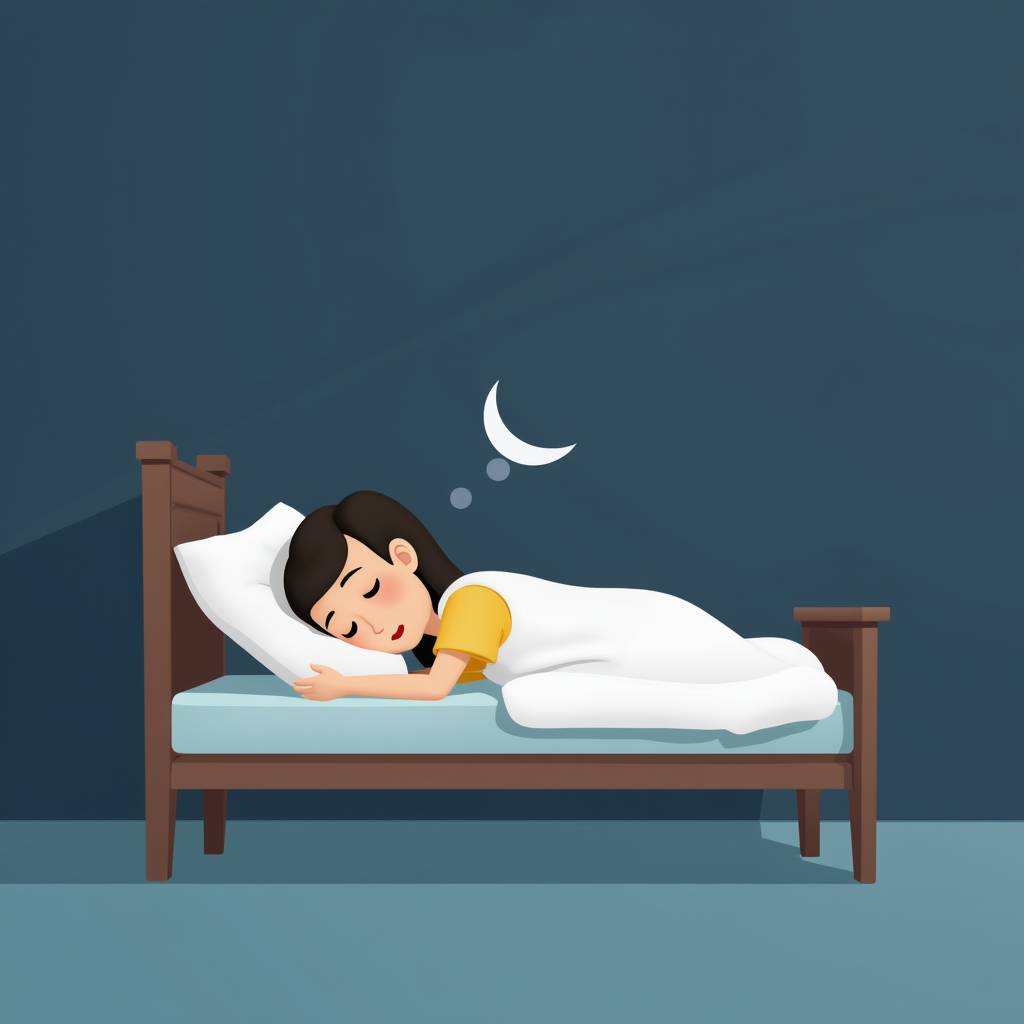Insomnia, one of the most prevalent sleep disorders globally, affects millions of individuals regardless of age or lifestyle. While Cognitive Behavioral Therapy for Insomnia (CBT-I) is widely considered the gold standard for non-pharmaceutical treatment, a powerful alternative is emerging—Genetic Learning (GL). This article presents a comparative overview of both approaches, evaluating their mechanisms, effectiveness, and long-term impact on sleep health.

Understanding CBT-I
Cognitive Behavioral Therapy for Insomnia is a structured, short-term psychotherapy that targets the thoughts and behaviors preventing restful sleep. It typically includes:
Sleep hygiene education
Stimulus control
Cognitive restructuring
Relaxation techniques
CBT-I has been extensively validated through clinical studies and is recommended by sleep specialists as a first-line treatment.

What is Genetic Learning?
Genetic Learning is a revolutionary cognitive system designed to rewire the brain’s subconscious intelligence and automatic systems using matrix-based logic, timed problem-solving exercises, and structured neurotraining. It is rooted in neurogenesis, brain plasticity, and real-time restructuring of mental patterns.
Rather than focusing only on changing thoughts or behaviors, GL works on a deeper neurological level, encouraging the development of new neural pathways and hormone regulation patterns during sleep.
Key Differences Between CBT-I and Genetic Learning
| Aspect | CBT-I | Genetic Learning |
|---|---|---|
| Mechanism | Behavioral & psychological | Neurological & subconscious |
| Timeframe | 6–8 weeks of sessions | Results within 2–3 weeks |
| Focus | Thought restructuring | Neural reprogramming |
| Tools Used | Journals, therapist sessions | Interactive exercises, digital platforms |
| Sleep Hormones | Indirect regulation | Direct stimulation of melatonin, HBDNF, HBNGF |
| Effect on Brain Structure | Minimal | Encourages neuroplasticity and neurogenesis |
Efficacy & Scientific Support
Clinical trials for CBT-I show success rates of 60–70% in improving sleep onset and duration. However, relapse rates are high when therapy stops. In contrast, early data from Genetic Learning incubator users shows:
Over 85% improvement in sleep depth and continuity
Enhanced mood, memory, and focus
Long-term neurocognitive stability, even after training concludes
These findings suggest that GL not only treats insomnia but reshapes how the brain engages with sleep long-term.
Use Cases
| Condition | CBT-I | Genetic Learning |
|---|---|---|
| Chronic insomnia | ✅ | ✅✅ |
| Depression-linked insomnia | ⚠️ Limited | ✅ |
| Neurological trauma or PTSD | 🚫 Not recommended | ✅✅ |
| Teen sleep disorders | ⚠️ Not optimal | ✅ |
| Senior brain aging | ⚠️ Minimal benefits | ✅✅ |
Final Thoughts
CBT-I remains a valuable tool in the sleep therapist’s arsenal. However, Genetic Learning represents the future of cognitive sleep training—a method that taps into the innate regenerative power of the brain, offering faster, deeper, and more sustainable healing for those suffering from disrupted sleep.
As neuroscience progresses, integrating tools like GL may revolutionize how we understand and treat not only insomnia but the entire architecture of human sleep.
Discover More with Sleeping Order
Related posts
Genetic Learning for Children: Building Strong Brains and Better Sleep from an Early Age
Introduction Childhood is the most critical period for brain development. It’s when neural pathways are
The Sleep Architecture Explained: How Genetic Learning Optimizes Each Sleep Stage
Introduction Sleep is not a single state—it’s a cycle made of several distinct stages, each
Chronotypes and Genetic Learning: Tailoring Sleep and Brain Training to Your Internal Clock
Introduction Not everyone is wired to wake up early. Some feel energized at dawn,



